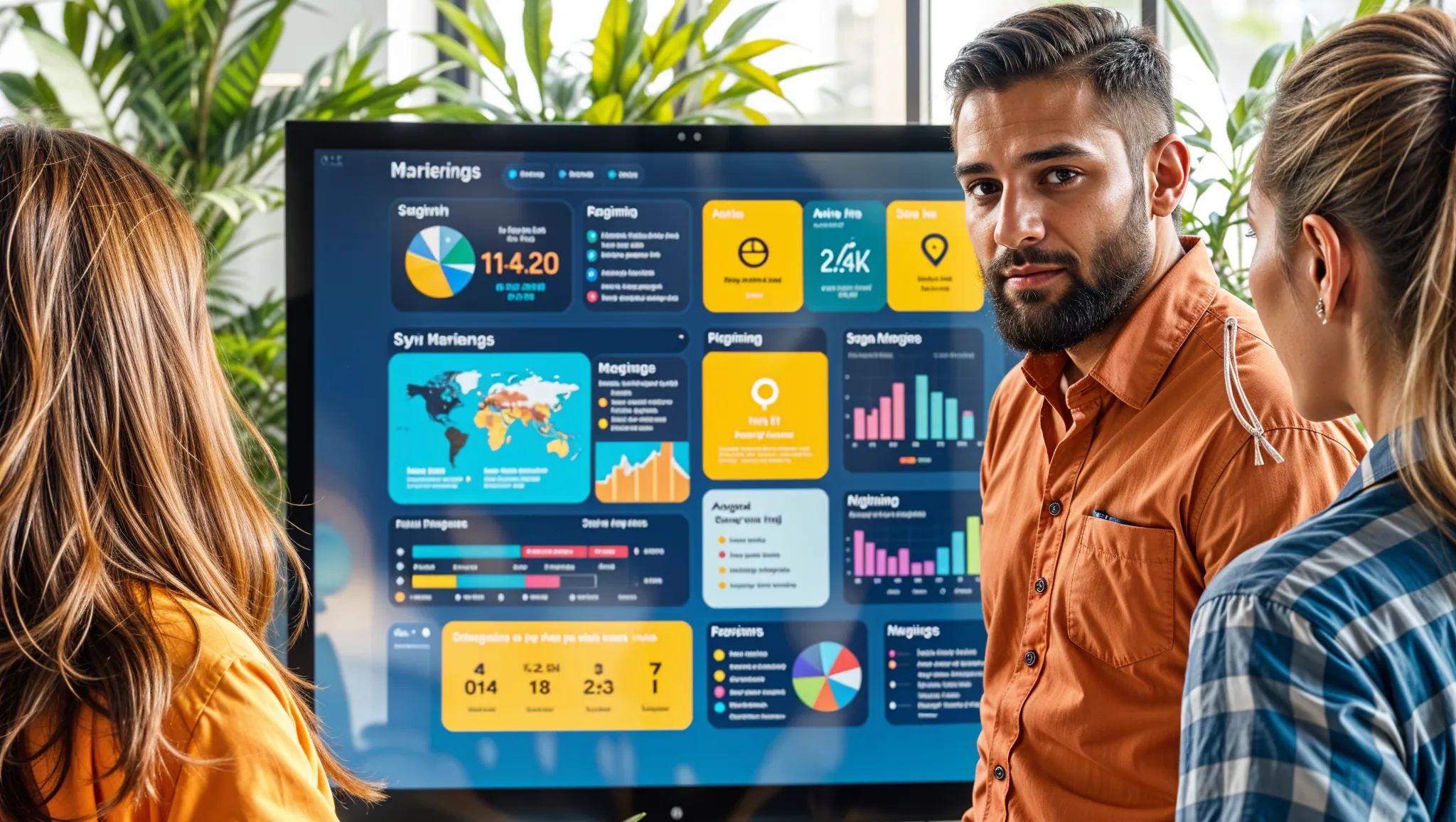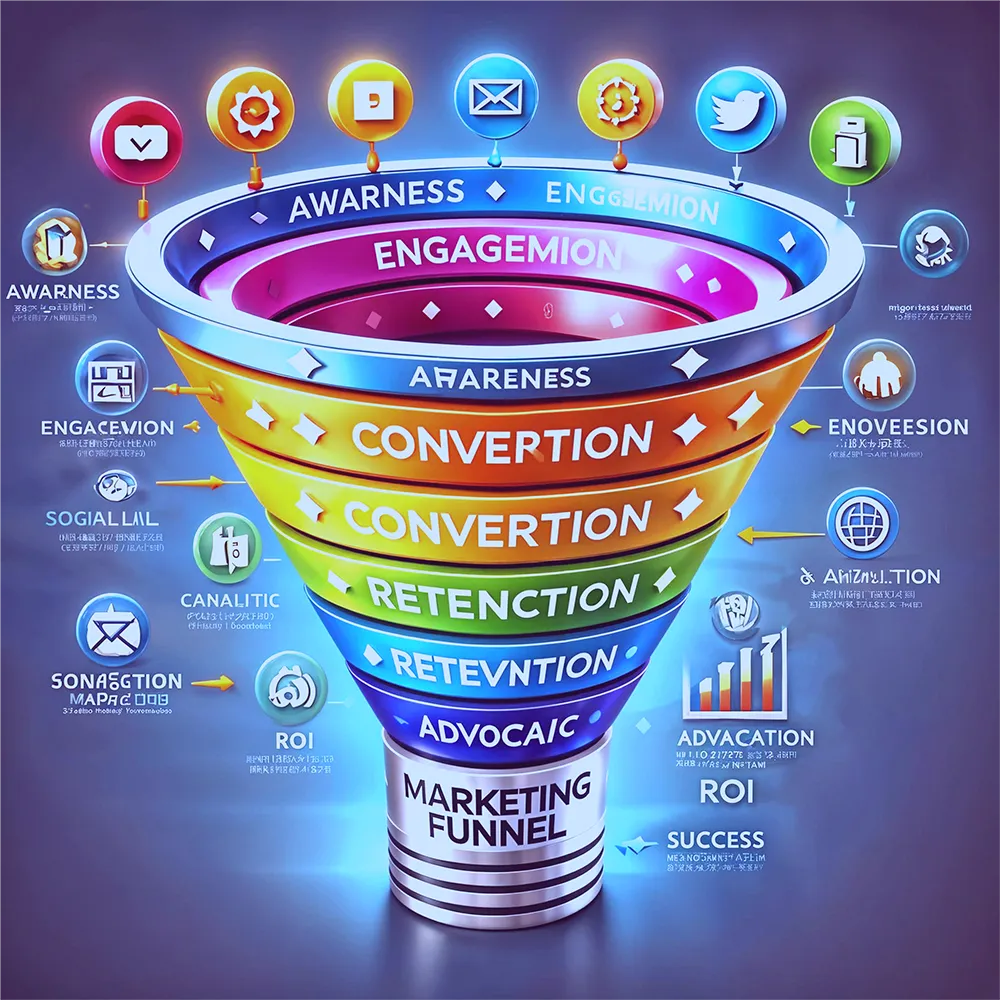In today’s competitive market, standing out requires more than just a strong message. A 360-degree marketing campaign ensures your brand reaches and resonates with your audience across every channel, creating a unified and impactful customer journey. Here’s how you can design and execute a successful campaign.
Table of Contents
What is a 360-Degree Marketing Campaign?
A 360-degree marketing campaign integrates multiple channels—digital, traditional, and experiential—to provide a consistent message and brand experience. This approach ensures every touchpoint, from social media to outdoor advertising, works together to maximize impact.
Campaign Concept

Campaign Name: “Your Complete Solution”
Objective: Position your product or service as the ultimate solution that fits seamlessly into every aspect of your audience’s life.
Target Audience: Define key demographics, interests, and geographic locations.
Key Message: “Simplify your life with [Your Product/Service] – your all-in-one solution.”
Execution Plan for a 360-Degree Marketing Campaign

1. Digital Marketing
- Website:
- Develop a dedicated landing page highlighting benefits, testimonials, and a clear Call-to-Action (CTA) like “Buy Now” or “Learn More.”
- Integrate interactive elements such as an ROI calculator or explainer videos to engage visitors.
- Social Media:
- Run targeted ad campaigns on Facebook, Instagram, LinkedIn, and TikTok.
- Share visually appealing posts, reels, and stories featuring influencers using your product/service.
- Host contests encouraging user-generated content.
- Email Marketing:
- Design personalized email sequences showcasing different aspects of your campaign.
- Incorporate time-limited offers to create urgency.
2. Traditional Marketing
- Print Media:
- Advertise in relevant newspapers, magazines, and local publications.
- Use QR codes to direct readers to your campaign landing page.
- Television and Radio Ads:
- Produce a 30-second ad featuring relatable scenarios that highlight your product/service’s benefits.
- Sponsor relevant radio shows or podcasts to increase exposure.
3. Outdoor Advertising
- Billboards and Transit Ads:
- Place vibrant and engaging ads in high-traffic areas.
- Use catchy taglines and bold visuals for maximum impact.
- Events and Trade Shows:
- Set up booths to demonstrate your product/service in action.
- Offer free samples or live demos to attendees.
4. Experiential Marketing
- Pop-Up Activations:
- Host events in key locations where customers can experience your product/service firsthand.
- Include immersive elements like VR/AR demonstrations.
- Street Team Marketing:
- Deploy branded teams to distribute samples, promotional codes, or brochures.
5. Influencer & Affiliate Marketing
- Partner with niche influencers to promote your campaign authentically.
- Launch an affiliate program to incentivize referrals with commissions.
6. Content Marketing
- Blog Posts:
- Publish informative articles optimized for SEO to drive organic traffic.
- Video Content:
- Create tutorials, customer testimonials, or behind-the-scenes videos for YouTube and social media.
- Podcasts:
- Launch a branded podcast or sponsor episodes of popular industry-related podcasts.
7. Community Engagement
- Local Sponsorships:
- Sponsor community events, schools, or charitable initiatives to enhance brand goodwill.
- Loyalty Programs:
- Reward repeat customers with exclusive discounts, early access to new products, or bonus points.
8. Retargeting & Analytics
- Use retargeting ads to re-engage visitors who didn’t convert on their first visit.
- Regularly analyze campaign performance metrics to refine strategies and optimize ROI.
Integrated Marketing Funnel

Here’s how a 360-degree marketing campaign aligns with the marketing funnel:
- Awareness:
- Use social media, SEO blogs, and print ads to attract attention.
- Examples: Eye-catching billboards or viral social media campaigns.
- Engagement:
- Provide valuable content like tutorials, webinars, or free resources.
- Examples: Interactive social media polls or informative email newsletters.
- Conversion:
- Encourage users to take action via CTAs, landing pages, and offers.
- Examples: “Sign up now” or “Limited-time discounts.”
- Retention:
- Build loyalty through exclusive perks, loyalty programs, and excellent customer service.
- Examples: Personalized email campaigns or discounts for returning customers.
- Advocacy:
- Turn loyal customers into brand ambassadors.
- Examples: Referral programs and encouraging reviews on social platforms.
Call-to-Action (CTA)
Keep your CTAs consistent across all platforms. Examples: “Experience [Your Product/Service] Today” or “Transform Your Life Now.” Include easy-to-remember URLs or scannable QR codes to drive traffic to your campaign.
By embracing a 360-degree marketing strategy, you can engage your audience at every touchpoint, build trust, and drive higher conversions. Start planning your campaign today and watch your brand soar!
Read more about 360 campaign from below links
- Learn more about 360-Degree Marketing Campaigns.
- Discover the power of SEO-driven Marketing.
- Explore effective Experiential Marketing Ideas.

